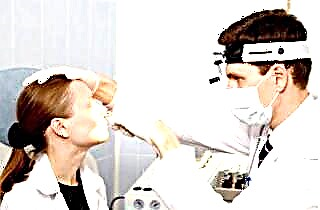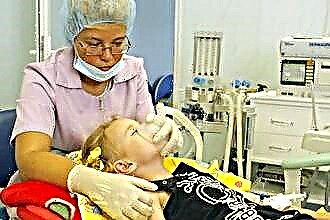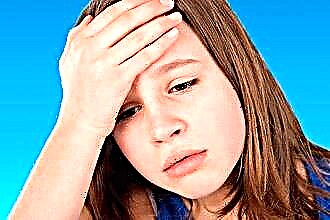We will talk about several inflammatory processes that simultaneously affect the nasal mucosa and paranasal sinuses. This combination of disorders has a common name - "rhinosinusitis". It is diagnosed in almost 5% of people seeking medical help. At the same time, a severe course of the disease is often noted. Why it happens? If the diagnosis is rhinosinusitis, can treatment be effective? Consider further the answers to the questions posed.
What is rhinosinusitis?
Rhinosinusitis is a collective name for various diseases of the nose. It is usually indicated as a preliminary diagnosis. Depending on the duration  the inflammatory process distinguishes between acute and chronic rhinosinusitis. After an examination involving the use of various methods, patients are found to have:
the inflammatory process distinguishes between acute and chronic rhinosinusitis. After an examination involving the use of various methods, patients are found to have:
- sinusitis, in which the inflammation is localized in the maxillary (maxillary) sinus;
- ethmoiditis with edema in the ethmoid labyrinth;
- frontal sinusitis with damage to the frontal sinus;
- sphenoiditis (pathology of the sphenoid sinus);
- pansinusitis - inflammation of all sinuses at once;
- hemisinusitis, in which several sinuses are affected, but on one side.
The impetus for the development of the disease is often given by ARVI. With a viral lesion of the nasopharynx, microorganisms intensively develop in the paranasal sinuses. Due to severe edema, the passage of air through the nose, the outflow of secretions worsens, conditions are created for the spread of infection.
The cause of rhinosinusitis may be untreated vasomotor rhinitis, accompanied by a runny nose, a feeling of complete blockage of the nose.
Bacteria can provoke the disease. Promotes mucosal allergy, weakening of local / general immunity.
A pathology that affects several sinuses is also caused by the growth of polyps. If the neoplasms are not removed, conservative treatment will not give the desired result, and the inflammation will spread.
Paying attention to symptoms
Rhinosinusitis in adults and children is characterized by difficulty breathing and nasal congestion. Regardless of the stage of development and the severity of the disease, there are general signs:
 swelling of the affected cavity;
swelling of the affected cavity;- runny nose, runoff of mucus along the back wall of the nasopharynx into the throat;
- headaches that sometimes seem unbearable;
- discomfort in the paranasal sinuses.
Depending on the severity of the lesion, others join these symptoms.
The most pronounced inflammation is manifested in the acute form of rhinosinusitis. Since it is characterized by the active reproduction of pathogenic bacteria, a general poisoning of the body occurs. Symptoms last no longer than 12 weeks. Such a disease can recur 4 times a year - once a season.
With the further development of the disease, a high temperature appears (up to 38 degrees), soreness in the paranasal zones, the spread of puffiness to the eyelids, and other areas of the face. The discharge becomes profuse and purulent. If these symptoms are ignored and the disease continues, then changes occur that require immediate medical attention.
In severe cases of the disease, the following are noted:
- severe pain and swelling in the forehead;
- swelling around the eyes;
- body temperature above 38 degrees;
- double vision, decreased visual acuity;
- displacement / protrusion of the eyeball and paralysis of the eye muscles;
- hearing impairment;
- loss of smell.
When the treatment was untimely, and the disease could not be eliminated within 12 weeks, a chronic form of the disease develops.
Due to the constant nasal congestion, the voice gradually becomes nasal, forced breathing through the mouth leads to a dry throat and cough. Due to the constant accumulation of mucus, an unpleasant odor from the nasopharynx appears.
Diagnostics and treatment
A patient with suspected rhinosinusitis should be evaluated. To clarify the diagnosis, it is necessary to carry out:
- initial examination at the ENT (using mirrors) of the patient's upper respiratory tract;
 blood test;
blood test;- rhinoscopy;
- Ultrasound of the paranasal sinuses;
- x-ray;
- computed tomography;
- MRI;
- puncture of the maxillary sinus.
Only on the basis of the diagnostic results can one decide how to treat rhinosinusitis in order to get a lasting result.
To relieve symptoms, measures are taken to eliminate the source of the disease process, its causes (pathogenic pathogens, polyps, allergens) and freeing up the channels for excreting mucus. The attending physician prescribes antibiotics, and this is done based on the results of laboratory tests of nasal discharge. The most popular drugs are recognized as "Amoxicillin", "Cefaclor", "Clarithromycin".
An important stage of therapy is cleansing the nasal cavity. Drops of vasoconstrictor and antibacterial action, drugs to ensure the outflow of mucus ("Naphazoline" or "Xylometazoline") are used. Complex treatment is impossible without rinsing the nose with effective means "Dolphin", "Aquamaris", containing sea salt rich in microelements.
If the inflammation is caused by an allergy, the use of antihistamines ("Allercaps", "Fenistil") is indicated. With their help, a severe runny nose, sneezing, lacrimation, dry cough are eliminated. However, antihistamines should not be taken at the same time as antifungal medications, as this combination adversely affects heart function.
With complex therapy, the use of drugs is provided to strengthen the body's defenses. In this regard, bacterial lysates have proven their effectiveness. We are talking about a vaccine that helps to build up immunity and prevent relapse.
Most often, a remedy such as "IRS 19" is recommended, which does not suppress natural immunity and does not cause addiction. The use of "Bronchomunal", "Ribomunil" is also shown.
Medicines from the people's pharmacy
 To some, concepts such as rhinosinusitis and treatment with folk remedies seem incompatible. However, for many diseases of the nose, doctors recommend turning to traditional medicine. Medicines based on medicinal plants - valerian, eucalyptus, sage, calendula, chamomile - have proven themselves well. They are antibacterial and can reduce inflammation and swelling.
To some, concepts such as rhinosinusitis and treatment with folk remedies seem incompatible. However, for many diseases of the nose, doctors recommend turning to traditional medicine. Medicines based on medicinal plants - valerian, eucalyptus, sage, calendula, chamomile - have proven themselves well. They are antibacterial and can reduce inflammation and swelling.
According to one of the recipes, a decoction is prepared from calendula, valerian, sage, eucalyptus leaves. All components are taken in equal parts, placed in a three-liter saucepan so that they take up a third of the container. The raw materials are poured with water to the top of the pan and boiled for 10 minutes. When the broth has cooled to room temperature, it is filtered and used for washing. The procedure is carried out 3 times a day. This broth can be instilled into the nose. Also, preparations are prepared based on St.
At home, you can make drops. It is necessary to take the juice of celandine and aloe in a 1: 1 ratio, and then add honey. It should take up 1/3 of the total volume. The mixture is instilled 6 drops into each nostril 3 times a day. For treatment, cyclamen juice extract (2 drops each), linden liquid honey (2 drops each) are also used.
Healers are advised to prepare propolis-based oil drops. It is necessary to dissolve a small piece of propolis in 100 ml of olive oil, and then bury the nose with the resulting product twice a day. Patients claim that with the help of such a medicine, almost all symptoms of the disease are removed.
Forecast and prevention
 Timely treatment of rhinosinusitis always gives a chance for full recovery, and the correctness of the chosen measures is confirmed by a decrease in the manifestations of the disease.Headache, discharge, nasal congestion disappear. The radiograph shows an improvement in the permeability of the channels. In the acute form of the disease, recovery occurs within a few days, but sometimes it takes about two weeks to get the effect.
Timely treatment of rhinosinusitis always gives a chance for full recovery, and the correctness of the chosen measures is confirmed by a decrease in the manifestations of the disease.Headache, discharge, nasal congestion disappear. The radiograph shows an improvement in the permeability of the channels. In the acute form of the disease, recovery occurs within a few days, but sometimes it takes about two weeks to get the effect.
The chronic form of rhinosinusitis threatens the spread of infection into the orbit and the cranial cavity, the development of dangerous diseases, including phlegmon of the orbit, purulent meningitis. However, such complications arise when medical advice is ignored or incorrect therapy is used. In the absence of complications, treatment gives a positive result, and the period required for rehabilitation depends on the response to drugs.
If the cause of inflammation is odontogenic sinusitis, the reproduction of one of the types of fungus, the growth of polyps, surgical intervention is indicated. Without the use of drastic measures, the therapeutic effect will not last long, the body's resistance to drugs will be formed.
As a preventive measure, it is recommended not to overcool, lead a healthy and active lifestyle, and visit the dentist on time. With ARVI, infectious rhinitis, it is necessary to carry out therapy in a timely manner, but for any disease one should not abuse antibiotics and self-medicate.

 swelling of the affected cavity;
swelling of the affected cavity; blood test;
blood test;

